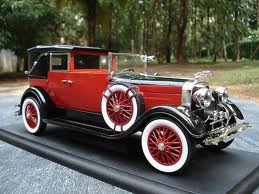Four Critical Conditions for Success
Below is a question from a Velocity dealers, and my response:
Dale,
I have a question that has been lingering in my head and I would be honored to get your input to it. I value your experience and expertise.
I am working very hard to make our pre-owned operation successful, since our “New Car” demise in 2009 with losing the Chrysler de alership during their bankruptcy. Some said we couldn’t make it. I felt differently and proved them wrong!!!
alership during their bankruptcy. Some said we couldn’t make it. I felt differently and proved them wrong!!!
As we grow and improve (and thank you to vAuto for giving us our latest bump up in success) I am trying to identify and embrace a reasonable matrix of target variables.
I want to increase sales and am not clear on the targets in the critical areas. What do you feel is the proper blend of the following to achieve a 75 retail unit per month dealership:
- # of units in inventory
- front end profit per unit?
- back end profit per unit?
- Average vAuto adjusted % to market?
- day’s supply of inventory?
- Average vAuto Market Day supply?
We currently:
- average 88 units in inventory
- average 35 units per month
- average $1,500-$1,700 front end gross
- $525 back end
- 98% average % to market pricing
- 76 average vAuto Market Days supply
Thank you Dale for your guidance.
Very Respectfully,
Larry Weathers, Weathers Motors
Larry,
First, thank you for your question. Below I will outline what I consider to be the four critical foundational conditions/metrics for success. Note, however, that the number of units in stock, front- and back-end gross are not among them. Each of these three should be considered as outcomes rather than inputs to your formula for success. I will explain below.
The first of these four critical conditions is an inventory comprised of vehicles with a reasonable market day’s supply. I consider any vehicle with less than a 60 day supply to be fortunate from a supply/demand perspective. Sixty-one to 90 is where most vehicles are, recognizing that there are plenty with 90+ MDS. With respect to your entire inventory, however, I believe that 75 MDS or less is minimally acceptable. Remember that the lower the MDS, the higher the demand and lower supply, and this holds positive implications for your prospects for future success.
Second, you need to maintain an inventory with properly priced inventory. This means knowing which ones to price high and drop gradually, and which ones to price low and drop frequently. When this is said and done, I like to see vehicles priced in 15 day age buckets roughly as follows: First 15 days, 97% of market, 15-30 days, 95%, 30-45 days, 92%. There should be no inventory over 45 days, and the above referenced price points may vary according to the market day’s supply of your inventory in each respective bucket. In other words, buckets with a higher MDS should be priced even more aggressively and vice-versa for lower MDS buckets.
Third, you MUST have a minimum of 50% of your inventory, at all times, under 30 days of age. The first 30 days is the period of time where your vehicles have enough gross margin potential to make a meaningful marginal contribution to the bottom line. Remember that there is a direct correlation between the percentage of your inventory under 30 days and your profitability. Top performing Velocity dealers always have 55-75% of their inventory under 30 days of age.
Fourth, your cost to market cannot exceed 84% (excluding your pack). It is simply impossible to make an acceptable financial return if there is not enough spread in your inventory between your investment and what they can likely be sold for
Having stated these four essential conditions, I would refer you to the second and third Velocity books for a much more in-depth explanation for their importance and to learn critical strategies for their implementation. Remember that today financial success is an engineered result to be derived by careful maintenance of these above described conditions. You should also remember that these conditions alone do not assure success, because there are a thousand other things that need to happen properly each day in the used car department. These are, however, the foundational pillars for all used vehicle department success.
Respectfully,
Dale
